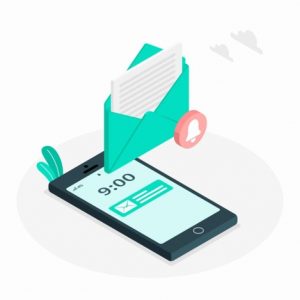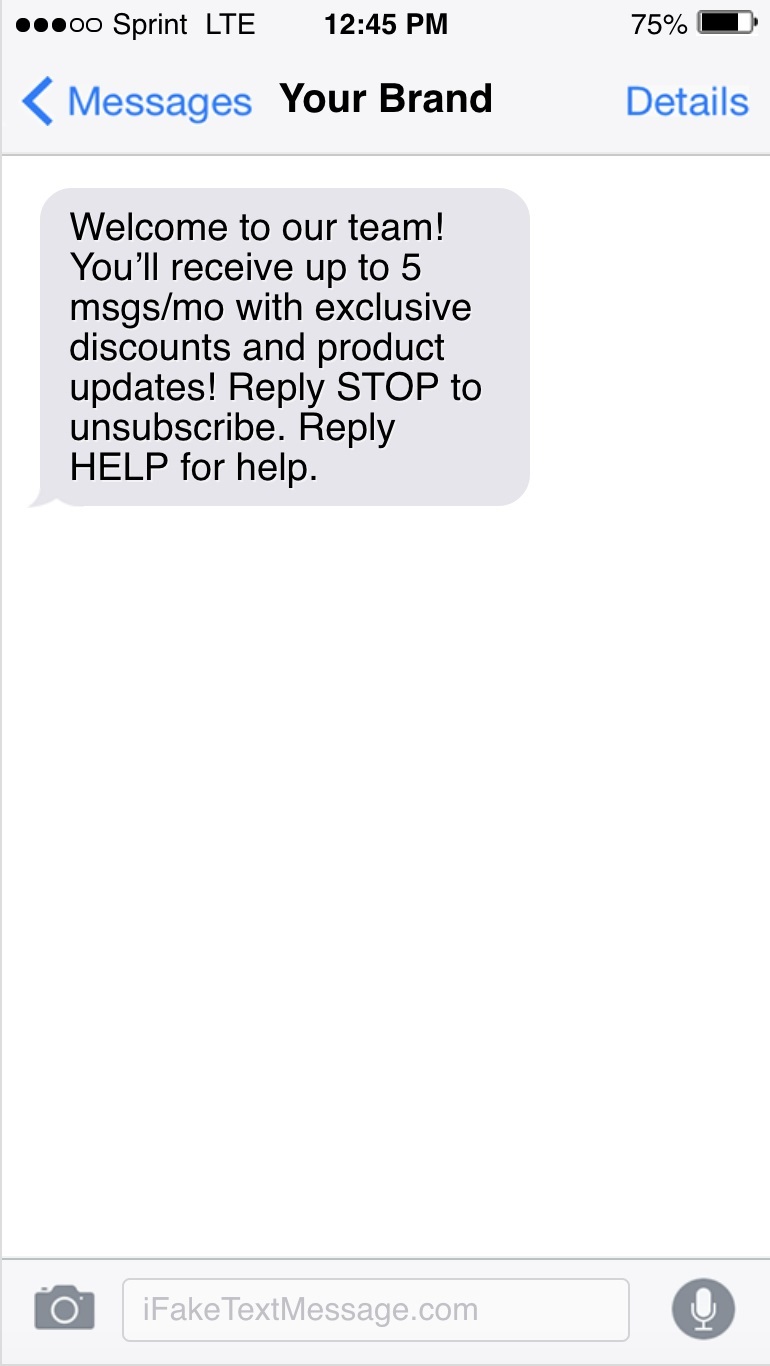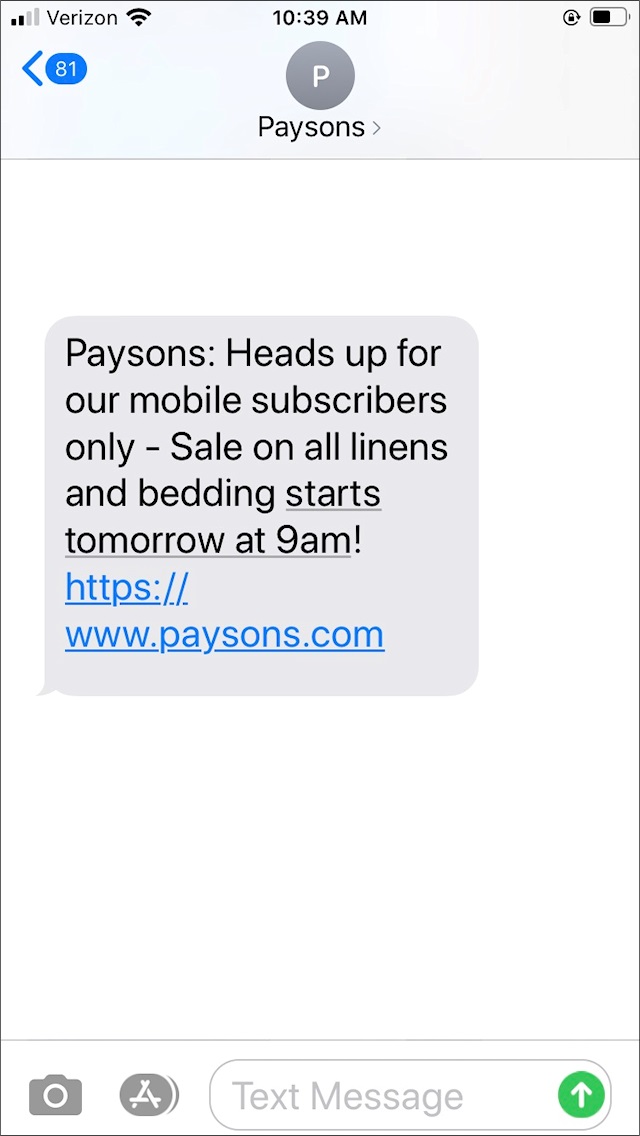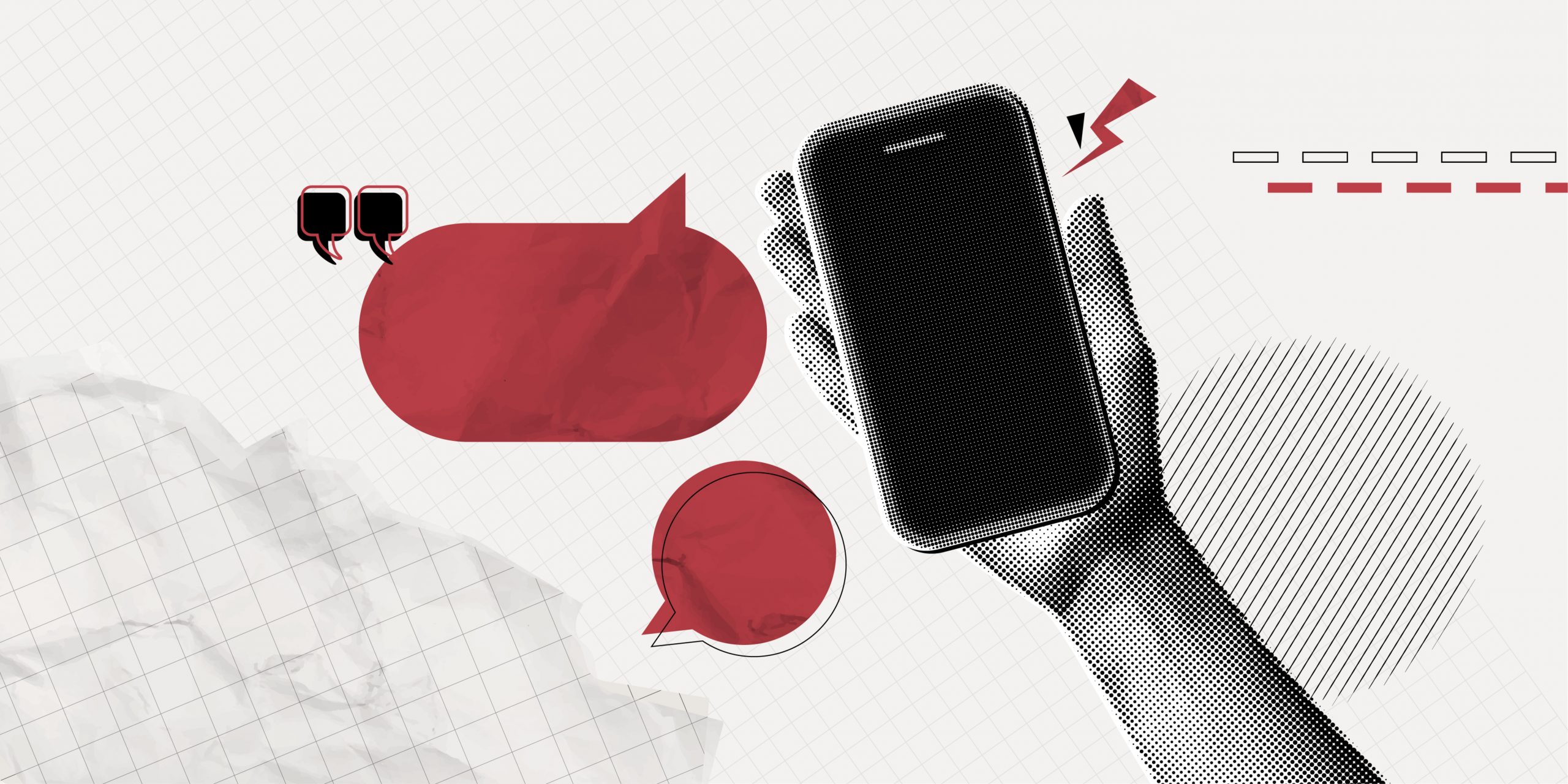Why use SMS as a marketing tool ?
- It’s easy to set up: You can create your campaign and send it very simply.
- It’s powerful because of its very short format.
- It’s cheap: an SMS costs on average 0,07€ per sending less than all the acquisition platforms
- Almost everyone has a mobile phone and can receive SMS messages.

Focus on the SMS content

- The sender must be filled in and is limited to 11 characters when it is customizable. Beyond that, it will go to error.
- The maximum size of an SMS written with standard characters is 160 characters. Beyond the 160 character limit, an additional SMS will be counted every 160 characters. Spaces count as 1 characters, and the following special characters count as 2 : € [] {} ~ ^ |, as well as the line break.
- Be careful, if you use tags: these will be replaced by text, take this into account when counting characters if you do not wish to exceed 160 characters → the unsubscribe tag is 17 characters long.
- All urls are automatically rewritten and replaced by a unique 20 character link. This rewriting allows tracking of clicks and saves space (whatever the initial url, it is replaced by a link of 20 characters). An option is available to deactivate the automatic rewriting of your url but clicks will not be tracked.
Certain types of content are strictly forbidden. This concerns all hateful content, pornographic content, terrorist content, etc. The same goes for any gambling, scamming or credit-related content. This generally falls into the category of “offensive content”.
Also beware of messages that are too commercially oriented (e.g. “You’ve won a free product!”). Phishing filters are becoming increasingly strict and borderline content may be considered a scam and blocked by operators.
What are the best practices ?
1. Vary the contact points
The key rule in any marketing strategy is to vary the contact points.
To maximise the chances of return on investment and message recall, it is important to address the message in different ways:
Emails / newsletters / social networks / online advertising / SMS
2. Use SMS sparingly
The repetition of the marketing message is very often badly perceived by the contacts. It can feel like spam or even stalking, so it is important to know how to balance it out.
SMS is a way of communication that can very quickly be perceived as intrusive.
Good times to send an SMS can be :
- Sales, special offers or one-off campaigns
- Opening of a shop for a Drive to Store
- Donation campaign / associations: blood donation…
SMS gives a sense of urgency to the recipient.
The less you use it, the greater is the impact !

3. Identify the company
Before talking about your offer, give your name, the name of your product and the subject of the message. The customer must clearly identify you.
You can sign your messages or give your phone number or address, especially if you are trying to generate leads.
4. Adapt the message to the format
160 characters is the limit of an SMS, which must therefore be concise and clear. The message must be understood at first reading.
Your contact should be able to unsubscribe from your mailing list easily.
Please note that the unsubscribe tag is 17 characters long (this must be taken into account when counting the characters).
5. Call to action
We recommend that you redirect the contact at the end of the message! To use as few characters as possible, use a shortened link.
By including links in your SMS messages, you encourage the customer to take action. However, whether it’s a purchase, a visit to the shop or participation in a competition, remember to use action verbs:
- Click here,
- Download the coupon,
- Go to the shop,
- Take advantage of our offer…
If you send to your application or website, don’t forget to insert a tracked link to follow the number of visitors coming from this sending in your analytics tools and check the efficiency of this channel for your next sendings.
6. Send to the right people … at the right time
The segmentation of your database is essential and even primordial when you send SMS marketing! Your click-through rate, your unsubscribe rate and your ROI will undoubtedly be impacted by an unqualified base.
7. at the right time !
As for the sending schedule, here again the law is strict: in France, it is forbidden to send marketing SMS from Monday to Saturday between 8.30 pm and 8 am as well as all day on Sundays and public holidays.
→ It is best to send your message after 5:30 pm for B2C companies and between 10 am and 12 am or 2 pm and 4 pm for B2B messages.
It is very easy to send a SMS campaign in ProbanceOne. To learn more, please read our tutorial on how to schedule a SMS campaign.
10 Ideas to use SMS in your marketing practices
- Birthdays: a way to please and give customers a good reason to visit the shop or website.
- Customer reviews: because it is your customers who speak best about your products, get their feedback to improve your customer experience and adapt your offers.
- Appointment reminders: beyond being convenient for your customers, you limit the cancellation rate. 70% of people consider SMS to be a good way to keep their attention.
- Promotional offers: trigger purchases by using promotional levers (coupons, promo codes, etc.). (coupons, promo codes…). Do not hesitate to create a sense of urgency to encourage your contacts to react quickly.
- New products/services: generate additional sales by inviting your customers to come and discover and test your flagship products and/or your new services.
- Loyalty at the point of sale: identify your in-store visitors by offering them SMS programs. The objective? Facilitate the sending of targeted promotions to make them come back to the shop.
- Shipment notifications: Support your customers from start to finish to ensure customer satisfaction. Keep them informed of when their purchases will be shipped and arrive at their home.
- Customer support & service: 83% of millennials would rather text a company than call a customer support line. This is a good way to develop a privileged customer relationship.
- Alerts & information: bank statements, bills… Inform your consumers about their account situation. A useful preventive tool for their daily life and which allows you to maintain the link.
- Contests & gifts: animate and engage your audience with contests! Take advantage of these moments to qualify your contacts and get to know them better (interests, preferences, etc.).
